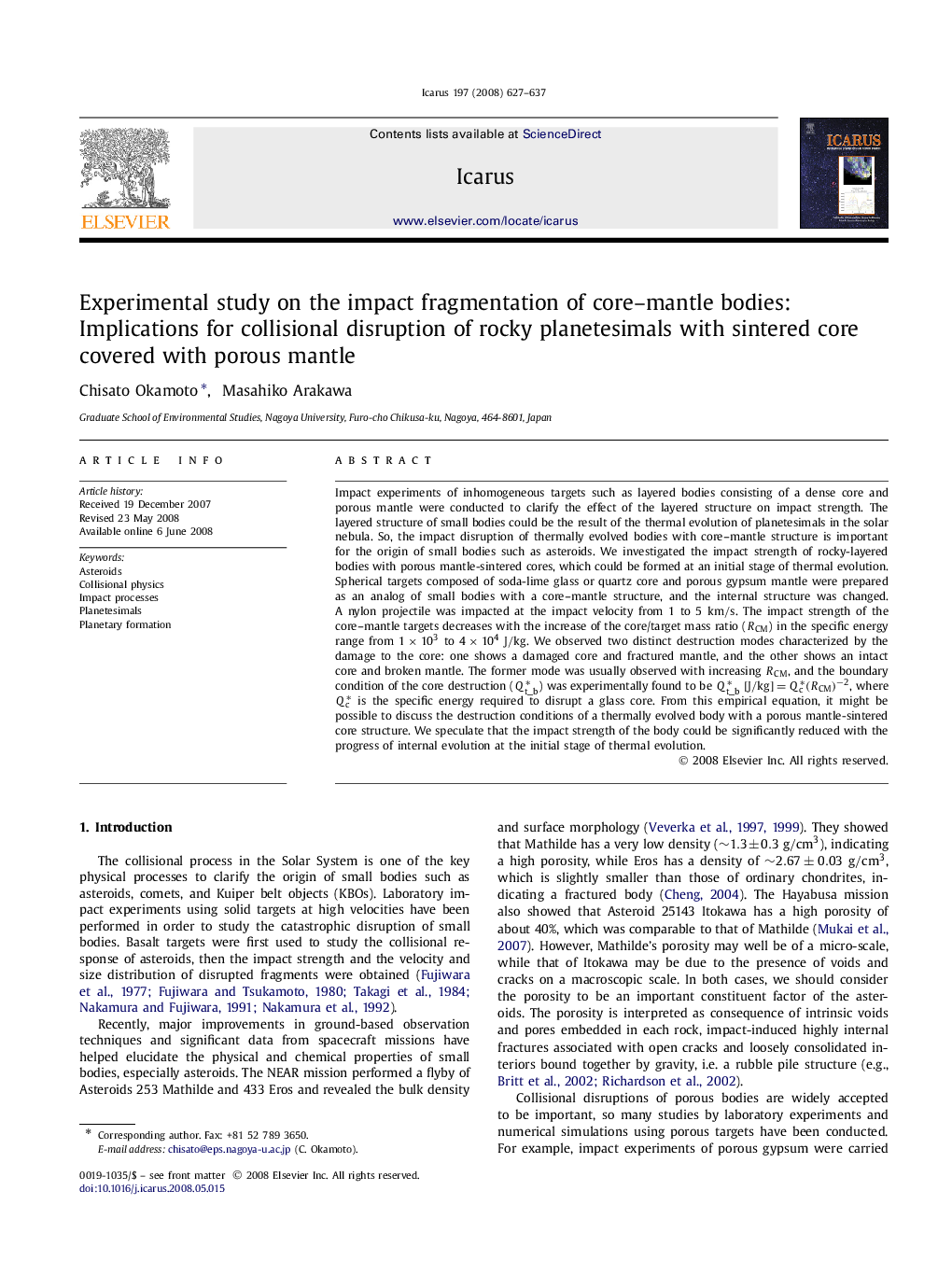| Article ID | Journal | Published Year | Pages | File Type |
|---|---|---|---|---|
| 1775810 | Icarus | 2008 | 11 Pages |
Impact experiments of inhomogeneous targets such as layered bodies consisting of a dense core and porous mantle were conducted to clarify the effect of the layered structure on impact strength. The layered structure of small bodies could be the result of the thermal evolution of planetesimals in the solar nebula. So, the impact disruption of thermally evolved bodies with core–mantle structure is important for the origin of small bodies such as asteroids. We investigated the impact strength of rocky-layered bodies with porous mantle-sintered cores, which could be formed at an initial stage of thermal evolution. Spherical targets composed of soda-lime glass or quartz core and porous gypsum mantle were prepared as an analog of small bodies with a core–mantle structure, and the internal structure was changed. A nylon projectile was impacted at the impact velocity from 1 to 5 km/s. The impact strength of the core–mantle targets decreases with the increase of the core/target mass ratio (RCMRCM) in the specific energy range from 1×1031×103 to 4×104 J/kg4×104 J/kg. We observed two distinct destruction modes characterized by the damage to the core: one shows a damaged core and fractured mantle, and the other shows an intact core and broken mantle. The former mode was usually observed with increasing RCMRCM, and the boundary condition of the core destruction (Qt_b∗) was experimentally found to be Qt_b∗[J/kg]=Qc∗(RCM)−2, where Qc∗ is the specific energy required to disrupt a glass core. From this empirical equation, it might be possible to discuss the destruction conditions of a thermally evolved body with a porous mantle-sintered core structure. We speculate that the impact strength of the body could be significantly reduced with the progress of internal evolution at the initial stage of thermal evolution.
